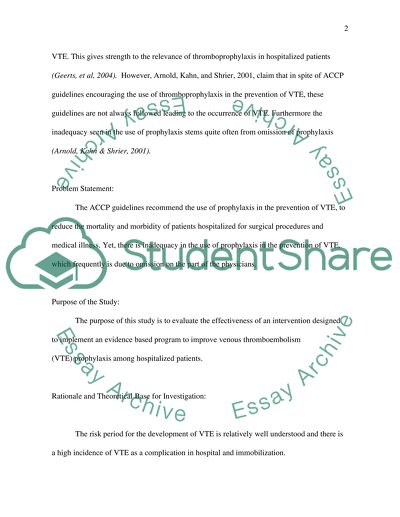TESTING A TOOL(FORM) FOR HOSPITALIZED PATIENTS TO PREVENT DVT Essay. Retrieved from https://studentshare.org/miscellaneous/1545361-testing-a-toolform-for-hospitalized-patients-to-prevent-dvt
TESTING A TOOL(FORM) FOR HOSPITALIZED PATIENTS TO PREVENT DVT Essay. https://studentshare.org/miscellaneous/1545361-testing-a-toolform-for-hospitalized-patients-to-prevent-dvt.


